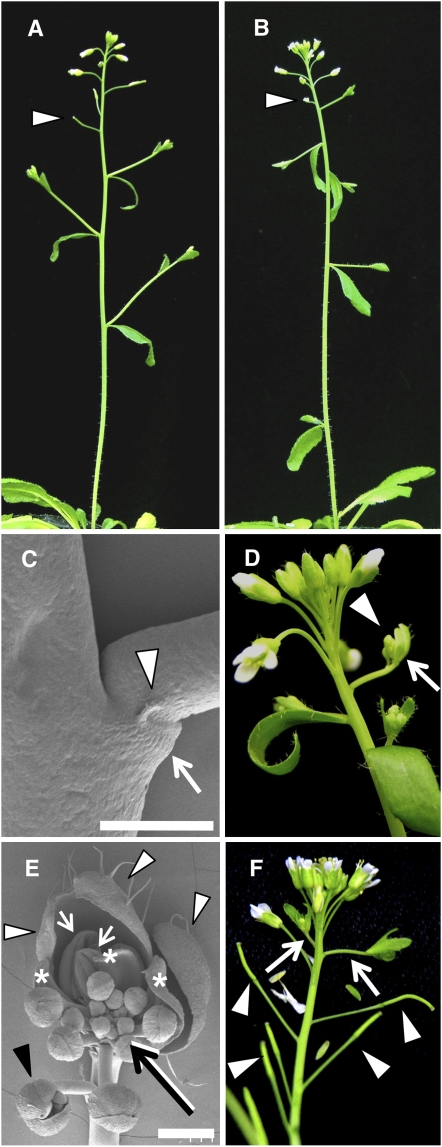Figure 1.
Inflorescence Phenotypes of the Wild Type and puchi-1.
(A) to (E) Inflorescence of wild type (A) and puchi-1 ([B] to [E]) grown under continuous light conditions.
(A) Inflorescence of a wild-type plant.
(B) Inflorescence of a puchi-1 plant. Compared with the wild type, the number of nodes with secondary inflorescences is increased in puchi-1. Arrowheads indicate the first flower formed after the transition from secondary inflorescences to flowers.
(C) Scanning electron micrograph of a puchi-1 branch that lacks a subtending cauline leaf but instead has a flat leaf-like organ (arrow) flanked by a pair of pin-shaped projections (only one of them is apparent in this image; arrowhead). Bar = 500 μm.
(D) Primary inflorescence of puchi-1, showing a mosaic branch consisting of a flower (arrow) and an inflorescence (arrowhead).
(E) Scanning electron micrograph of a mosaic branch of puchi-1. White arrowheads indicate sepal-like organs in the first whorl. Asterisks and white arrows indicate petal- and stamen-like organs, respectively. The black arrow indicates the inflorescence-like shoot, and the black arrowhead indicates an extra flower produced from the pedicel. Bar = 500 μm.
(F) Primary inflorescence of puchi-1 grown under short-day conditions, showing ectopic secondary inflorescences (arrows). The ectopic secondary inflorescences are produced after six to nine flowers/siliques (arrowheads) have arisen on the primary inflorescence.
[See online article for color version of this figure.]

